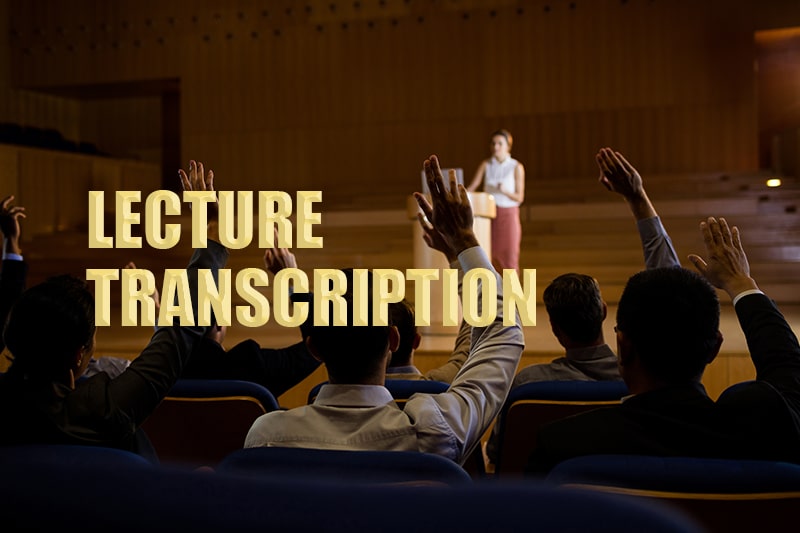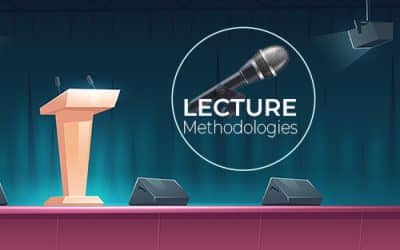
The goal of every educator or academician is to impart their expertise and knowledge for the subject matter they teach while ensuring that each student is aware of the material and the expectations. The achievement of these objectives, however, might not always be easy. Whether it’s a small discussion group or a large lecture hall, a typical classroom setting can be difficult for both teachers and students. Therefore, professors and students rely on academic transcription services to provide quick lecture transcription and facilitate learning. A transcript can ensure that the students have all the necessary information for learning while still guaranteeing that they are interested in what the lecturers are teaching.
Three Reasons to Get Quick Lecture Transcription
- Taking notes during a lecture isn’t the most interesting approach to study, and it can cause students to lose interest quickly. By using a transcription service, students can focus on listening instead of taking notes all the time, which increases their likelihood of participating in class. Moreover, it enables them to go back over the transcripts and review any topics that weren’t initially evident to them. By scanning the transcript and uploading it to a virtual learning environment that students can access, it may also be shared without using paper. Students who miss a lecture will benefit from this as well. They can easily access the notes online, eliminating the need to borrow a friend’s notes.
- Every student learns a little bit differently, some might not have any trouble paying attention in class or taking notes, while others find it difficult to simply listen and take notes for an hour or so. For those students who prefer to read on their own, a quick lecture transcription will be a great resource. They can locate the transcripts and read them at their convenience after the lecture. The availability of this transcript makes lectures much easier to access. For instance, a lecture could be difficult for those pupils who are hard of hearing. But with a transcript, it becomes easier for them to understand the lectures better.
- Students aren’t the only ones that benefit from transcription, it also helps teachers. It allows them to evaluate their lessons and teaching methods. Teachers can review the transcription themselves after the lecture to determine what went well and what might not have gone as smoothly as they had planned. The transcripts show the teachers how they might enhance their classes by repeatedly reading the transcripts after each lesson.
Tips to Get Quick Lecture Transcription
- Ask for permission to record: Some professors forbid students from recording their lectures because they view this as stealing their ideas. It might be wise to find out whether your university has any restrictions on recording lectures. It is advisable to check with each professor to get their approval if there are no policies. You should let your lecturer know if you have any disability, such as hearing loss, as this will be a strong justification for why you need to record the lecture. Similarly, the professors must also inform the class that the lecture will be recorded, if they are interested. It gives them the chance to review the lesson and concentrate on the discussion with confidence.
- Purchase the appropriate recording gear: Although many laptops and smartphones are equipped with built-in microphones and recording devices, these gadgets are not sophisticated enough to record your academic lecture in high quality. Additionally, for the most accurate audio to text transcription possible, a high-quality recording is required. Either purchase a hand-held recording device or a smartphone external microphone to obtain a recording of high quality. The host can make a “Local Recording” to capture the session if it is a zoom class.
- Sit closely: If you are seated at the rear of the lecture hall, even if you have an external microphone or a high-quality handheld recorder, you won’t be able to record anything the professor says. So, try to sit in the first few rows and pick a seat far from other people as they can move around a lot and produce background noise that will affect the quality of your recording. Make sure you’re seated closer to the microphone or recorder if you are a professor and recording the lecture.
- Reduce background noise: Transcribing audio can get difficult if there is too much background sound. Close all the windows, turn off the fans, and listen for sound coming from the air conditioners to ensure there is no background noise. To prevent anyone from entering the recording space, you can also post signs that read “recording in progress” or “do not interrupt.” Keep in mind that anything placed too close to the recording setup, such as shuffling papers, can cause noise to be picked up by the microphone.
- Talk clearly and slowly: If your speaker does not talk slowly and clearly, all of your top-notch recording equipment will be useless. Request that each speaker identify themselves by name, position, and affiliation. To prevent confusion during transcribing, make sure that speakers who are present in the recording room don’t interrupt one another.
- Always test the recording: Make a quick test recording with each speaker every time. Verify the speaker is audible, loud, and clear speaking during the test recording. To record speakers with low volume and to prevent recording interference from unexpected background noises, you may need to adjust the settings.
- Audio limiter: Use an audio limiter to stop an audio recording from having excessive loudness fluctuations. An audio limiter prevents a signal from rising above a preset level. If the audio source becomes excessively loud, it is very beneficial in preventing sound clipping and distortion.
- Have another person convert the audio to text: You can manually convert the audio to text if you want to. But for every hour of audio, conversion takes almost four hours. You have a busy schedule as a college student, attending lectures, writing papers, and attending parties. You don’t have time to listen to a lecture you’ve already heard, pause to type, then rewind and listen to it again. Hiring a professional transcription service that delivers correct, affordable transcripts on schedule is a preferable solution.
The method you teach and the way your students learn can both be altered through transcription. So get in touch with an academic transcription service that can provide you with error-free transcripts and ensure quick lecture transcription. For all of your significant audio and video recordings, MOS Legal Transcription Service provides dedicated business transcription services. Within the allotted time, we can handle anything from technical audio to academic transcription, research interviews, videocasts, radio talk shows, and videocasts.



